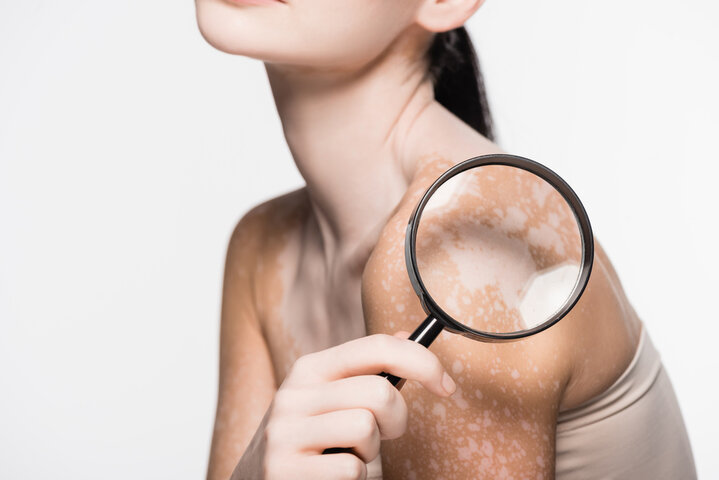+62 817-4929-054
Understanding Vitiligo: Causes, Treatments & Lifestyle Tips for Healthy Skin
by: dr. Detty Dwi Kurniati, Sp.KK

What is Vitiligo?
Vitiligo is a condition involving the loss of skin pigment, marked by the appearance of clearly defined white patches. These patches can appear anywhere, but are commonly found on the hands, feet, and face — and in extensive cases, may affect large areas of the body. This condition occurs because the pigment-producing cells (melanocytes) are damaged or lost. Therefore, vitiligo is classified as an autoimmune disease.
Why Is It Difficult to Treat?
Treating vitiligo is challenging because the exact cause is not fully understood. Several known factors are associated with the onset or worsening of this condition:
- Autoimmune disorders: the immune system mistakenly attacks melanocytes.
- Triggering factors such as emotional or psychological stress (e.g., job loss, divorce).
- Unhealthy lifestyle, such as lack of sleep or insufficient sunlight exposure.
- Lack of adequate sunlight or unprotected exposure to sunlight.
However, the evidence for these factors varies — and not everyone with these risk factors will develop vitiligo.
Treatment Options
Although there is no definitive cure for vitiligo, several therapeutic modalities can be considered:
- Topical creams such as corticosteroids or immunosuppressive creams (e.g., tacrolimus) for specific areas.
- Camouflaging techniques or cosmetic products to help make the patches less visible.
- For widespread vitiligo, light therapy (phototherapy) such as UVB rays may be considered.
- Vitamin D supplements or attention to vitamin D deficiency — since depigmented skin is more vulnerable to sun exposure and potential vitamin D deficiency.
Prevention & Healthy Lifestyle
To help prevent the spread or limit the progression of vitiligo, the following lifestyle recommendations are advised:
- Get enough rest and manage stress — as stress can trigger the condition.
- Maintain a balanced diet rich in antioxidants — to support overall body health.
- Protect the skin from excessive sun exposure — as depigmented areas are more prone to UV damage.
- If you have a family history of vitiligo or autoimmune diseases — be vigilant and seek early medical evaluation if white patches appear.
Although vitiligo cannot be completely cured for everyone at this time, it only affects the skin and not internal organs. This means that despite changes in skin appearance, many people continue to live healthy lives. With proper management — including covering patches to boost confidence, living a healthy lifestyle, and undergoing appropriate therapy — quality of life can be significantly improved.
We hope this article is helpful to everyone. For families or relatives with a history of vitiligo or autoimmune diseases, it is recommended to be more vigilant and adopt a healthy lifestyle early to prevent worsening of the condition. Don’t hesitate to consult RS Premier Bintaro for further treatment.
Contact us
For information and make an appointment
| Loading data... |
|---|

















